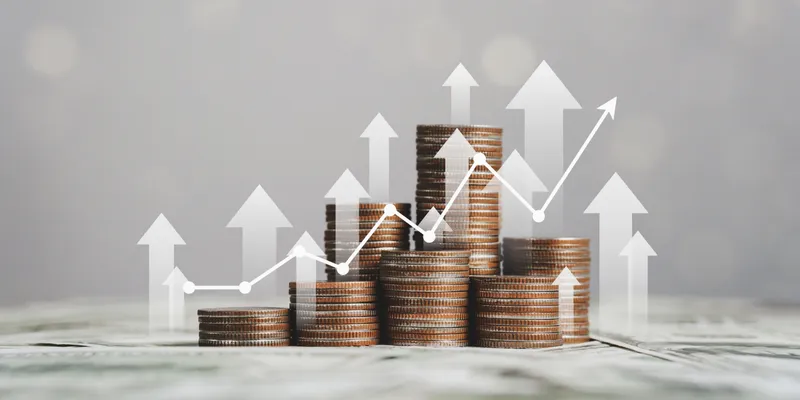You might be familiar with concepts like interest or risk and returns of an investment. Before making an investment, you probably compare the different levels of risk and corresponding benefits each investment avenue has to offer.
When it comes to traditional investments, the rules are often simple. However, as you keep expanding your investment horizons, you need to understand certain technical concepts in order to make the best choices for your portfolio.
This winter, given the current global economic condition, a recession is most likely expected to cause a mayhem in the financial market all over the world. Hence, it is the need of the hour to keep yourself well informed about all the aspects of the fund or scheme you want to invest in, in order to ensure that your funds are not affected by the nearing financial blizzard.
Speaking of non-traditional investment options, many people are directing their funds towards the bond market. Since bonds are not as risky as equity, they attract more risk averse investors. But while planning to invest in a bond, many people often synonymously use terms like yield to maturity and coupon rate. However, there is a notable difference between the two. Distinguishing these two terms can help you make the right investment choice and adopt a strategy that best fits your goals.
Let’s break down these terms for you and show you how to calculate them with examples.
What is a coupon rate?
When we invest our money into a fixed deposit (FD), we earn interest on our principal amount. For example, let’s assume that you have invested your money in an FD where the bank is offering you an interest of 6 1/2 %.
So, 6 1/2 % interest is the income that you’re earning from this fixed deposit. Now, in a similar fashion, where you’re investing into a bond, you will get some interest on your investment. This interest is called as the coupon rate.
Coupon rate is just a fancy term given to the interest itself. So, when you are investing into a bond, the returns that you receive will be called as coupon rates.

Image: Shutterstock
To elaborate it further, let’s say you have a 7% GOI bond. Here it means that 7% is the coupon rate offered on that bond. Now, coupon rate is always applied on the face value to get to the coupon payments that you’re receiving. So, in this case, assuming that the face value is Rs 1,000, the 7% of Rs 1,000 would be Rs 70. This will be the coupon payments that you will be getting in this bond.
What is a Yield to Maturity (YTM)?
Unlike a fixed deposit, bonds are traded on the exchange and are available in the secondary market. This is different from fixed deposits, and this is why whenever you’re investing in a bond, your purchase price can either be higher than the face value or lower than the face value. So, you not only get coupon payments but also capital gains or losses depending upon the price at which you have invested.
Calculation of yield to maturity
To understand this concept, let’s take an example of three possible scenarios. In the first scenario, we shall assume that the bond was purchased at par, which means it was purchased at the face value itself. Let’s consider the face value of this bond as Rs 1,000 with a coupon rate of 7% and a maturity period of 10 years.
Now, there could be two possible reasons why this happens. One, if you’re investing in a bond from the issue itself. Suppose this is a Government of India bond, and you are directly purchasing it, then you will be buying it at par, i.e., at face value. Secondly, the bonds are also tradable in the secondary market. So, at the same time, you can also invest into a bond which is trading at par.
Although, in the practical sense, this is least likely to occur because either the price will be slightly higher or lower than the face value. We can calculate the same from a theoretical perspective. Here’s how the calculation will go.
How to calculate YTM at par?
To calculate YTM, you only need to apply the rate formula in excel. You will have to mention the NPR, i.e., 10 years, along with the periodic interest payment. PMT is nothing but the interest payments that you’re receiving, that is called as coupon payments in terms of bond. So, when you’re investing into a bond, as per our example, the coupons that you’re receiving is 7% of the face value.
Hence, the present value, whatever amount you’re investing into a bond is the same as your purchase price. We can say that you’re investing Rs 1,000 in the present, and you will get the face value back in the future. From this, we can understand that whenever you are investing into a bond at par, your coupon rate will be equal to your YTM.
For the second scenario, let’s assume similar figures. Face value is Rs 1,000, coupon rate is 7%, and maturity period is another 10 years. But the purchase price this time is Rs 900. So, when we say that the purchase price is Rs 900 in the secondary market, this bond it is available at a discount.
How to calculate YTM at discount?
For calculating YTM at discount, we shall use the same formula. With this, we will get the return or the YTM as 8.53%. However, if you compare it to the coupon rate, you will notice a difference. The YTM is 8.53%, whereas the coupon rate is 7%.
But why is that so? Well, it is because YTM not only reflects the coupon payments that you are receiving but also the capital gains that you are making from the purchase price till the maturity value. In this example, you are investing at a discount, but on maturity, you are getting Rs 1,000. This gain is also factored in your YTM.
How to calculate YTM at premium?
Now moving on to the third scenario with the same assumed figures, the face value being Rs 1,000, coupon rate is 7%, and time to maturity is another 10 years, but this time your purchase price is Rs 1,100. Here, the bond is available at premium.
Applying the same rate formula to calculate the YTM, we will get 5.66%. So, although the coupon rate is 7% the overall returns that are reflected in YTM is just 5.66% because this bond was purchased at premium.
Comparing all the three scenarios, it is clear that the coupon rate remains constant, as it was 7% throughout in our example. But at different levels, your YTM could be different, assuming that you will hold that bond till maturity. Also, it shows the inverse relation between interest rate and the price of the bond. As interest rate rises, the price of the bond falls and vice versa.
Conclusion
We hope that you have understood the difference between yield to maturity and coupon rate of a bond along with the relation between interest rate and bond prices. Bear in mind that if you are purchasing the bond at par and plan on holding it till maturity, look for a better coupon rate. However, if you purchase it at a discount, the YTM will be higher. Lastly, in case of a bond purchased at premium, the YTM will be lower. Once you understand this difference, you can make the right investment strategies to maximise your returns.
Considering the current global economic scenario, it is believed that winter is coming in the form of a possible global recession. Therefore, it is important to make sure that you get all the necessary information before making any investments, and if required re-evaluate your portfolio to take the right precautions.
(Disclaimer: The views and opinions expressed in this article are those of the author and do not necessarily reflect the views of YourStory.)










